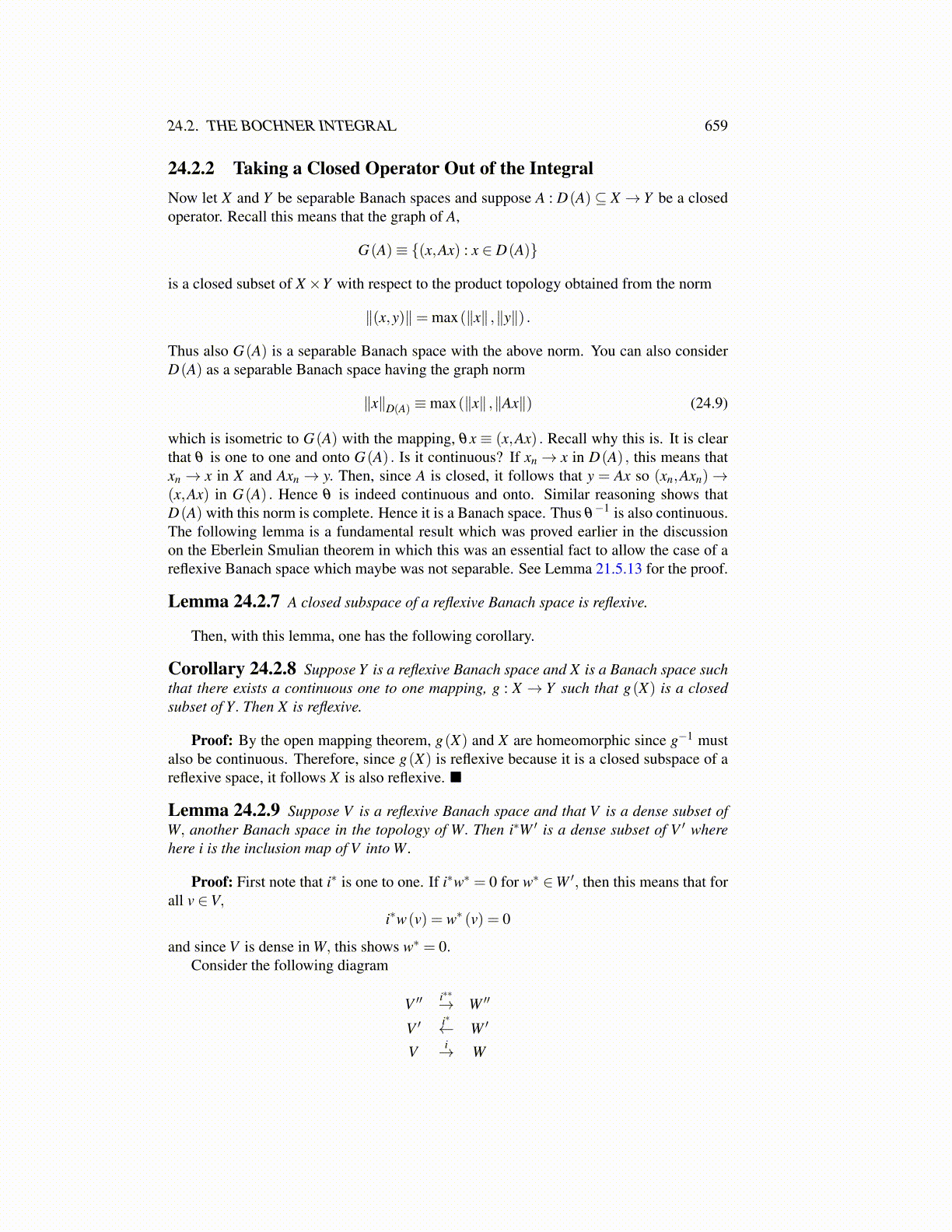
24.2. THE BOCHNER INTEGRAL 659
24.2.2 Taking a Closed Operator Out of the IntegralNow let X and Y be separable Banach spaces and suppose A : D(A) ⊆ X → Y be a closedoperator. Recall this means that the graph of A,
G(A)≡ {(x,Ax) : x ∈ D(A)}
is a closed subset of X×Y with respect to the product topology obtained from the norm
∥(x,y)∥= max(∥x∥ ,∥y∥) .
Thus also G(A) is a separable Banach space with the above norm. You can also considerD(A) as a separable Banach space having the graph norm
∥x∥D(A) ≡max(∥x∥ ,∥Ax∥) (24.9)
which is isometric to G(A) with the mapping, θx ≡ (x,Ax) . Recall why this is. It is clearthat θ is one to one and onto G(A) . Is it continuous? If xn→ x in D(A) , this means thatxn → x in X and Axn → y. Then, since A is closed, it follows that y = Ax so (xn,Axn)→(x,Ax) in G(A) . Hence θ is indeed continuous and onto. Similar reasoning shows thatD(A) with this norm is complete. Hence it is a Banach space. Thus θ
−1 is also continuous.The following lemma is a fundamental result which was proved earlier in the discussionon the Eberlein Smulian theorem in which this was an essential fact to allow the case of areflexive Banach space which maybe was not separable. See Lemma 21.5.13 for the proof.
Lemma 24.2.7 A closed subspace of a reflexive Banach space is reflexive.
Then, with this lemma, one has the following corollary.
Corollary 24.2.8 Suppose Y is a reflexive Banach space and X is a Banach space suchthat there exists a continuous one to one mapping, g : X → Y such that g(X) is a closedsubset of Y. Then X is reflexive.
Proof: By the open mapping theorem, g(X) and X are homeomorphic since g−1 mustalso be continuous. Therefore, since g(X) is reflexive because it is a closed subspace of areflexive space, it follows X is also reflexive. ■
Lemma 24.2.9 Suppose V is a reflexive Banach space and that V is a dense subset ofW, another Banach space in the topology of W. Then i∗W ′ is a dense subset of V ′ wherehere i is the inclusion map of V into W.
Proof: First note that i∗ is one to one. If i∗w∗ = 0 for w∗ ∈W ′, then this means that forall v ∈V,
i∗w(v) = w∗ (v) = 0
and since V is dense in W, this shows w∗ = 0.Consider the following diagram
V ′′ i∗∗→ W ′′
V ′ i∗← W ′
V i→ W